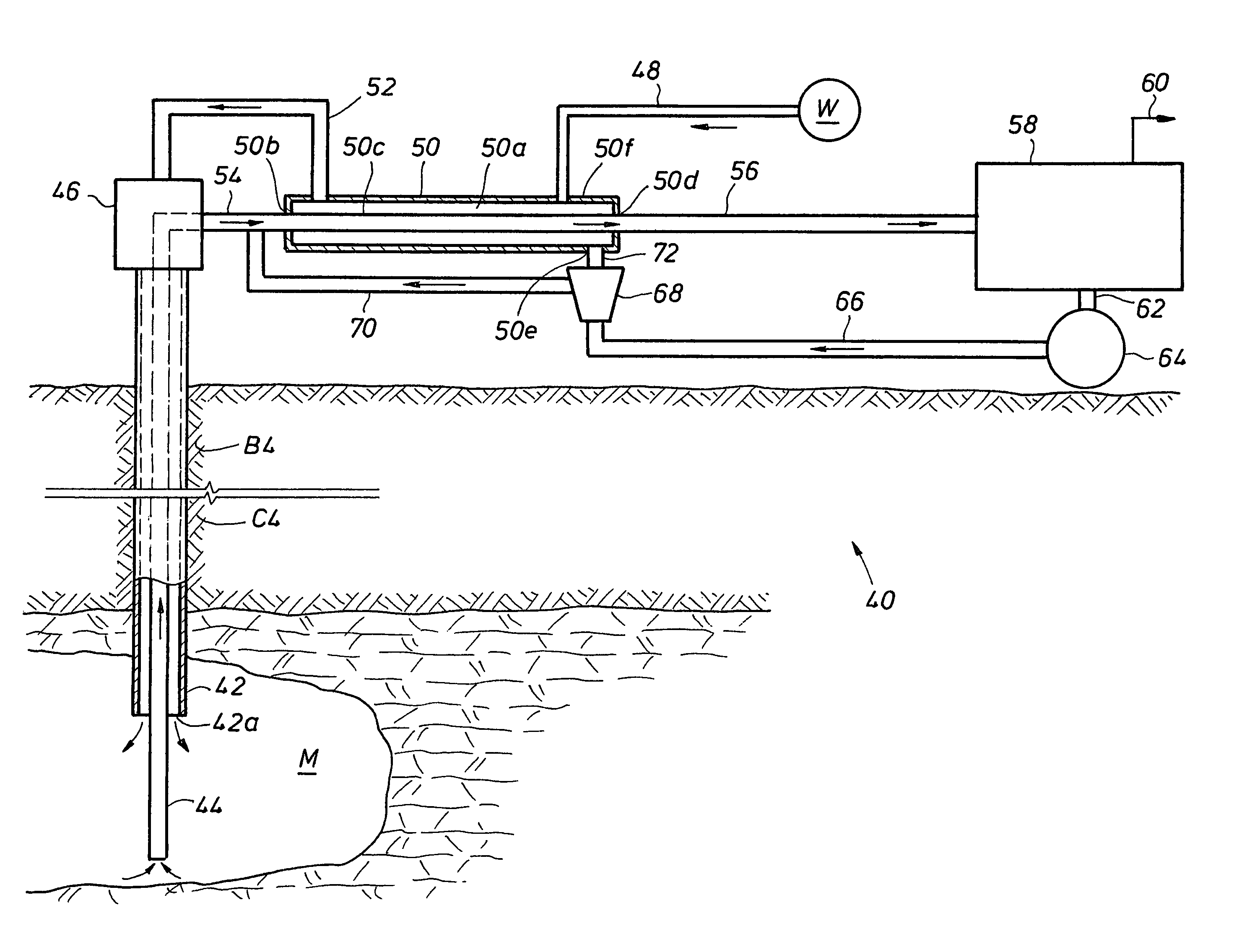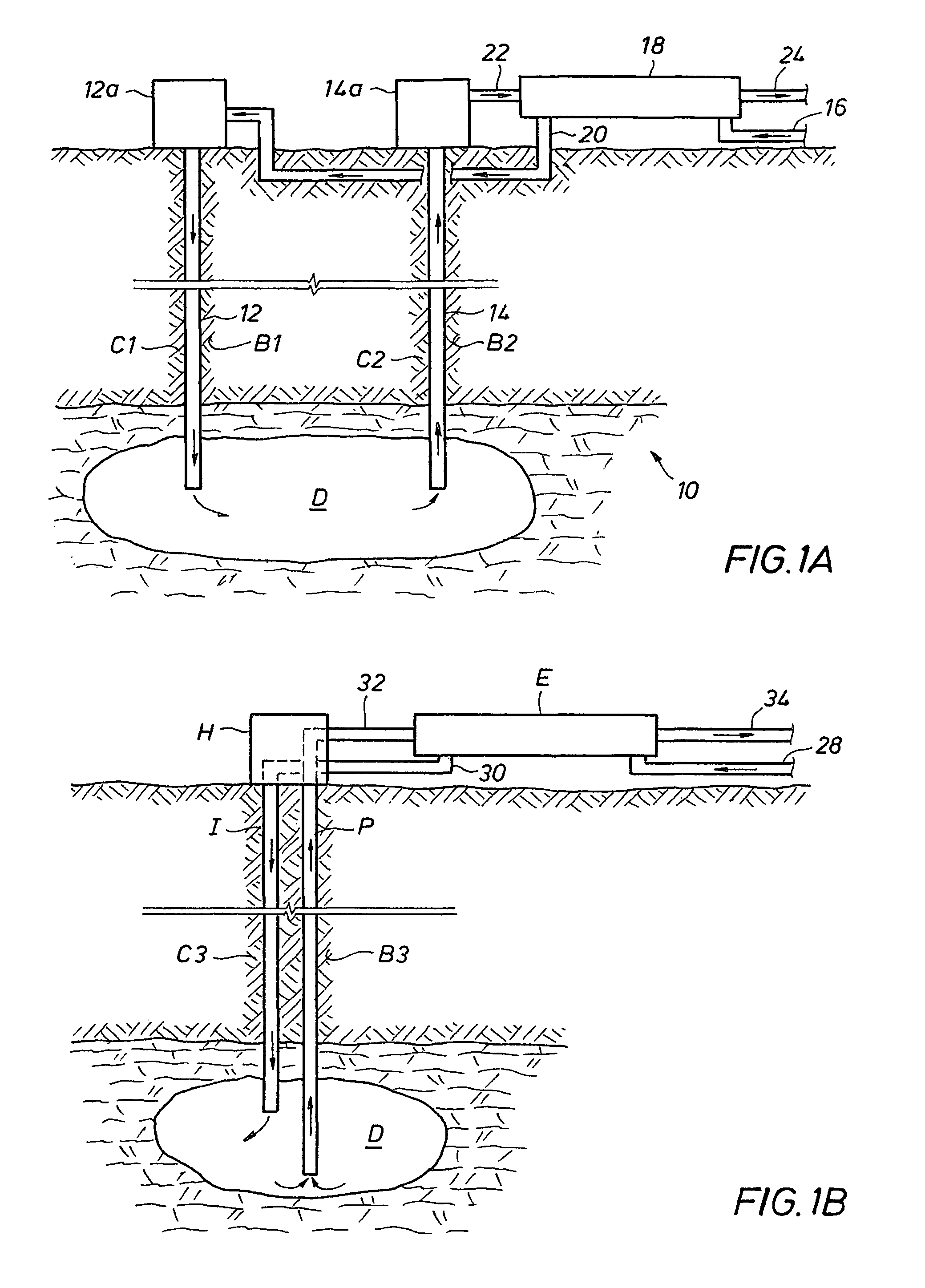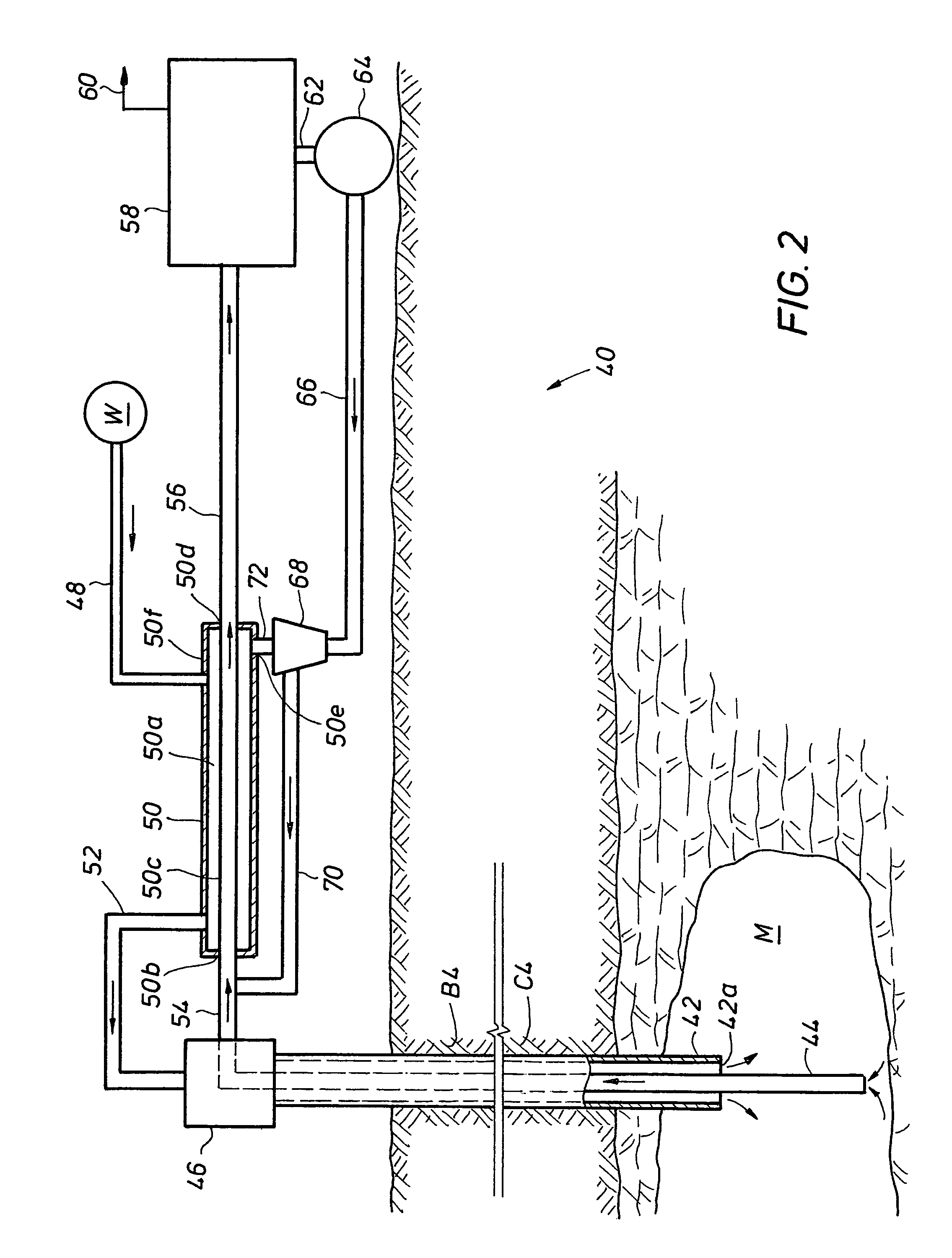Method and system for solution mining
a technology of solution mining and mining method, which is applied in the field of mining, can solve the problems of wasting thermal energy in the production brine, affecting the leaching rate and saturation level of original production brine, and affecting the leaching rate and saturation level of the original production brine, etc., and achieves the effect of increasing the leaching rate and the saturation level
- Summary
- Abstract
- Description
- Claims
- Application Information
AI Technical Summary
Problems solved by technology
Method used
Image
Examples
example
Solution Mining an Ore of Sylvite
[0060]As an illustrative and hypothetical example, an evaporite bed consisting of halite (NaCl) and sylvite (KCl) has a temperature of 150° F. as obtained from a down-hole temperature survey. The bed is 50% sylvite and 50% halite, which allows the bed to be selectively leached. In selective leaching only the more soluble sylvite is dissolved, and the halite remains in place. Mining is initiated by performing an undercut at the bottom of the bed. This is done by installing an immiscible fluid like oil a few feet above the bottom of the target bed. Solution mining then takes place under the pad, mining in a radial direction away from the well. This produces a circular disc about 2 feet high with a diameter of about 200 feet. Once the undercut is complete, after about 100 days, the pad that prevents the undercut from leaching upwards is removed and production leaching is started by leaching upwards. The flow rate of the injection brine is adjusted so th...
PUM
 Login to View More
Login to View More Abstract
Description
Claims
Application Information
 Login to View More
Login to View More - R&D
- Intellectual Property
- Life Sciences
- Materials
- Tech Scout
- Unparalleled Data Quality
- Higher Quality Content
- 60% Fewer Hallucinations
Browse by: Latest US Patents, China's latest patents, Technical Efficacy Thesaurus, Application Domain, Technology Topic, Popular Technical Reports.
© 2025 PatSnap. All rights reserved.Legal|Privacy policy|Modern Slavery Act Transparency Statement|Sitemap|About US| Contact US: help@patsnap.com



